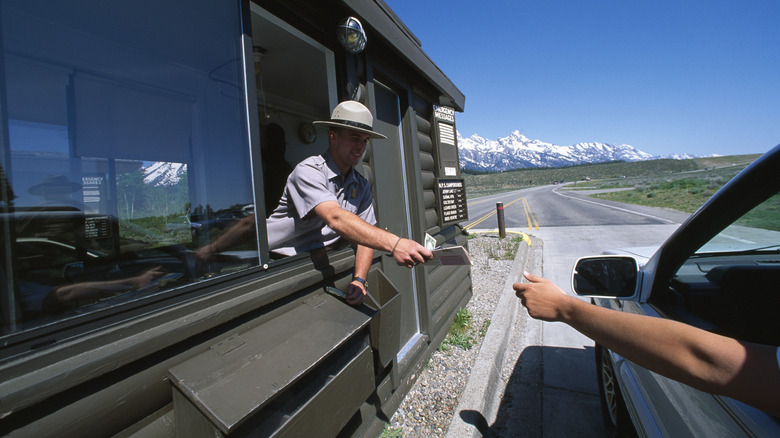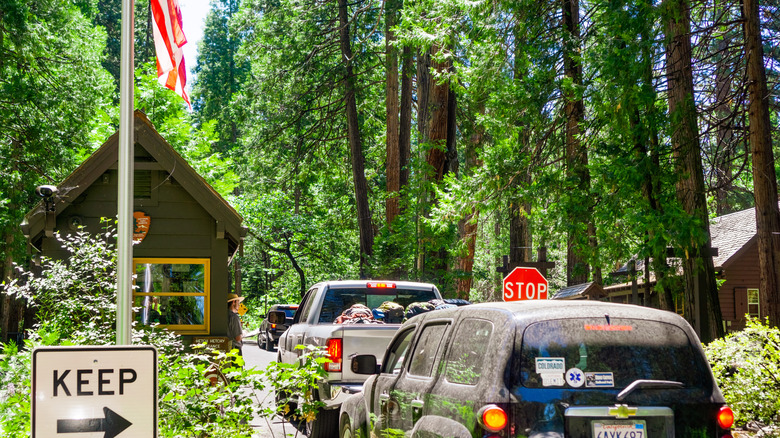You Might Be Turned Away At Several Popular National Park Entrances If You Don't Bring This
The National Parks System has stewarded some of the most beautiful, preserved lands of the country, welcoming visitors from all over the world since 1916 and promising unmatched adventure and beauty on America's best cross-country road trip. But in 2020, some of the parks observed a big change that affected many visitors — Pipe Springs National Monument in Arizona went cashless, and it has become the norm for many other parks throughout the country. Since then, other recognizable names in the National Parks System have followed suit, like the Badlands National Park in South Dakota and Crater Lake National Park in Oregon.
Nowadays, announcements indicating the use of mobile- and card-only payment methods seem fairly common, with Sequoia and Kings Canyon and Mount Rainier national parks joining the growing list in May 2025. For some, these changes seem logical or even mundane, but for many, the inability to use cash at a national park felt inequitable. So much so that a lawsuit formed against the cashless policy.
The lawsuit alleged that U.S. currency must be accepted as a form of payment for transactions dealing with public parties, according to federal laws and codes. However, a federal judge dismissed the case, citing that no parties were actually denied entry to the parks during their experiences. This doesn't mean an end to all cash at the parks, though. Each individual park's leadership has the authority to make the decision on the cash conundrum themselves, and there is no federal protocol strictly mandating that any park must go cashless. Therefore, visitors must confirm accepted payment methods prior to visitation.
Avoid bringing cash for easy access to national parks
For the parks that have gone cashless, there are many reasons for the decision, including increased efficiency, safety, and security. In an interview with Frommers, Colleen Rawlings of Crater Lake National Park points out that card or mobile payments are faster than cash transactions, which "reduce the time spent waiting in line at the entrance station and afford the visitor more time to enjoy the park." Mobile and card payments are also theft deterrents, as little to no cash is kept at the entrances for many of these now-cashless parks. Rather than expending resources on safeguarding and transporting cash assets, these funds can be reallocated toward visitor-focused initiatives like visitor education.
While retail outlets inside the parks, like bookstores and souvenir shops, may still accept cash in some locations, expect to be turned away at park entrances if you only have cash on hand. The entrances will accept payments by card or another form of electronic payment, as well as pre-purchased passes. A complete list of national parks that have gone cashless is hard to come by, but be aware that new names join the ranks of card-only venues consistently. Be sure to check the respective park's website diligently to see if they have gone cashless — this is often found under the park's FAQs or fee information on the site. Of course, there are plenty of ways to get into national parks for free, where you won't have to worry about payment methods at all.

